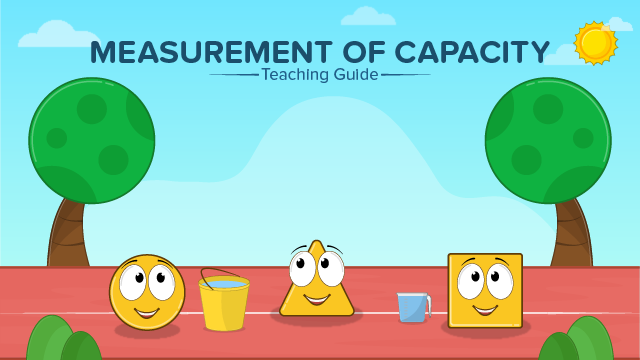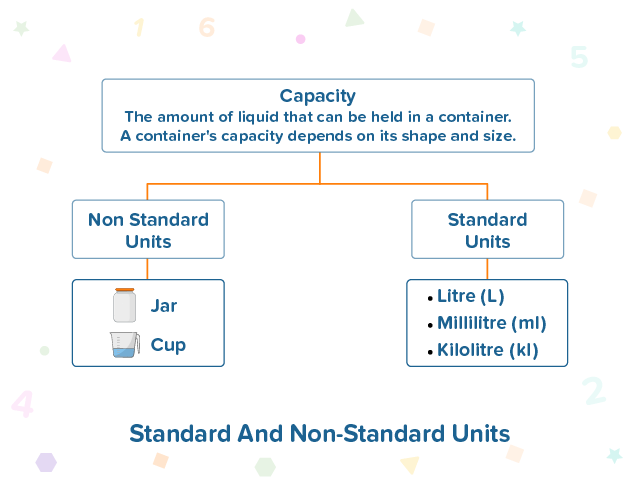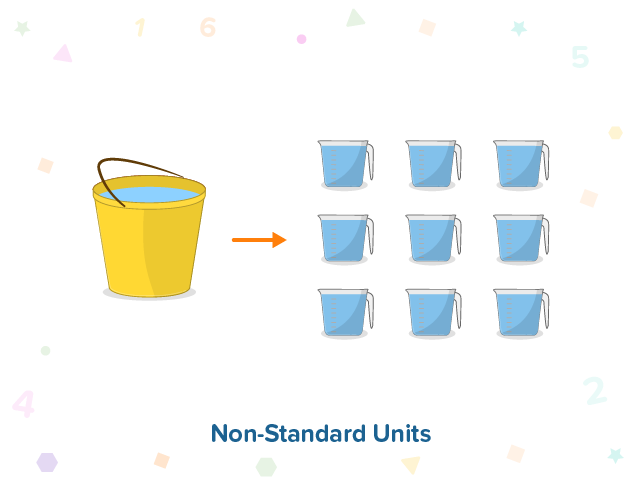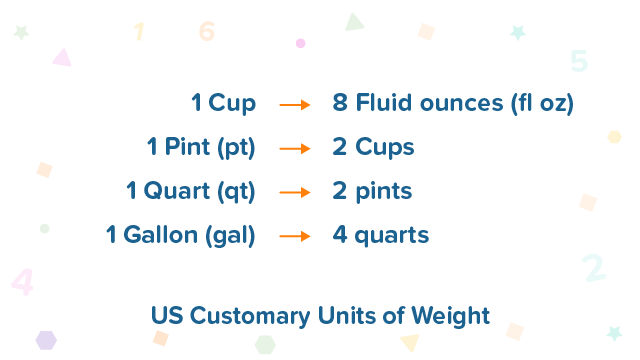
Have you noticed that when you pour water into any bottle, there is a limit to how much water they can hold? Containers such as medicinal syrups or sauces also specify a maximum amount they can hold.
This specific amount that a container can accommodate is known as its capacity. Capacity is a term used to measure the volume or amount of liquid a container can hold.
Let’s explore the concept of measuring capacity, different units used for capacity measurement, animated story on measurement of capacity, capacity posters and worksheets, and the process of measuring capacity.

Non - Standard Units
Non-standard units for measuring capacity are alternative methods used to estimate or compare the volume of liquids without relying on standardized units. These units are often based on personal references or everyday objects. Here are a few examples of non-standard units for measuring capacity like cups, handfuls, teaspoons, etc.
Non-standard units are useful in introducing the concept of capacity to young learners. They provide a practical understanding of measuring capacity before moving on to standardized units such as litres or millilitres.

Metric Measurement :
The standard units for measuring capacity in the metric system are litres (l) and millilitres (ml).
Millilitre (ml) : Millilitre is represented by the abbreviation ml. It is used to measure very small quantities of liquids, such as cough syrup.
Litre (l) : Litres is denoted by the letter l. It is used to measure larger quantities of liquids like juice, milk, and water.
The relationship between millilitres and litres is as follows:
1 litre = 1000 ml or 1000 ml = 1 litre

Customary Measurement :
Customary measurement refers to the system of measurement used in the United States, which includes units such as gallons, quarts, pints, cups, and fluid ounces.
Gallon : A gallon (gal) is the largest unit of liquid measurement in the customary system. It is equivalent to 4 quarts. Gallons are commonly used to express the capacity of fuel tanks.

Tools To Measure Capacity :
In everyday life, various tools are used to measure capacity, especially in cooking. Measuring cups and spoons are commonly used for this purpose. The units of measurement for capacity range from fractions of a teaspoon to gallons. The measuring cup is one of the most widely used tools for measuring capacity accurately.

Teaching measurement of capacity with kid-friendly, clear, and easy-to-understand posters from Uncle Math School by Fun2Do Labs :
Ignite kids’ curiosity with engaging stories for role play and skits, making the learning of this concept an exciting and effective experience. Teaching measurement of capacity through stories from Uncle Math School by Fun2Do Labs :
Learning measurement of capacity can be made enjoyable by incorporating interactive games and activities.
To give more practice with measurement of capacity, the following activity can be conducted :
- Give a fixed amount odf water like 1 bottle of water to all children.
- Distribute them to children and instruct them to measure the capacity of the objects by standard and non standard units.
- Provide measuring cup to measure by standard units and a glass to measure by non standard units.
Help your kids practise measurement of capacity with interesting and engaging fun worksheets and solutions from Uncle Math by Fun2Do Labs.
















